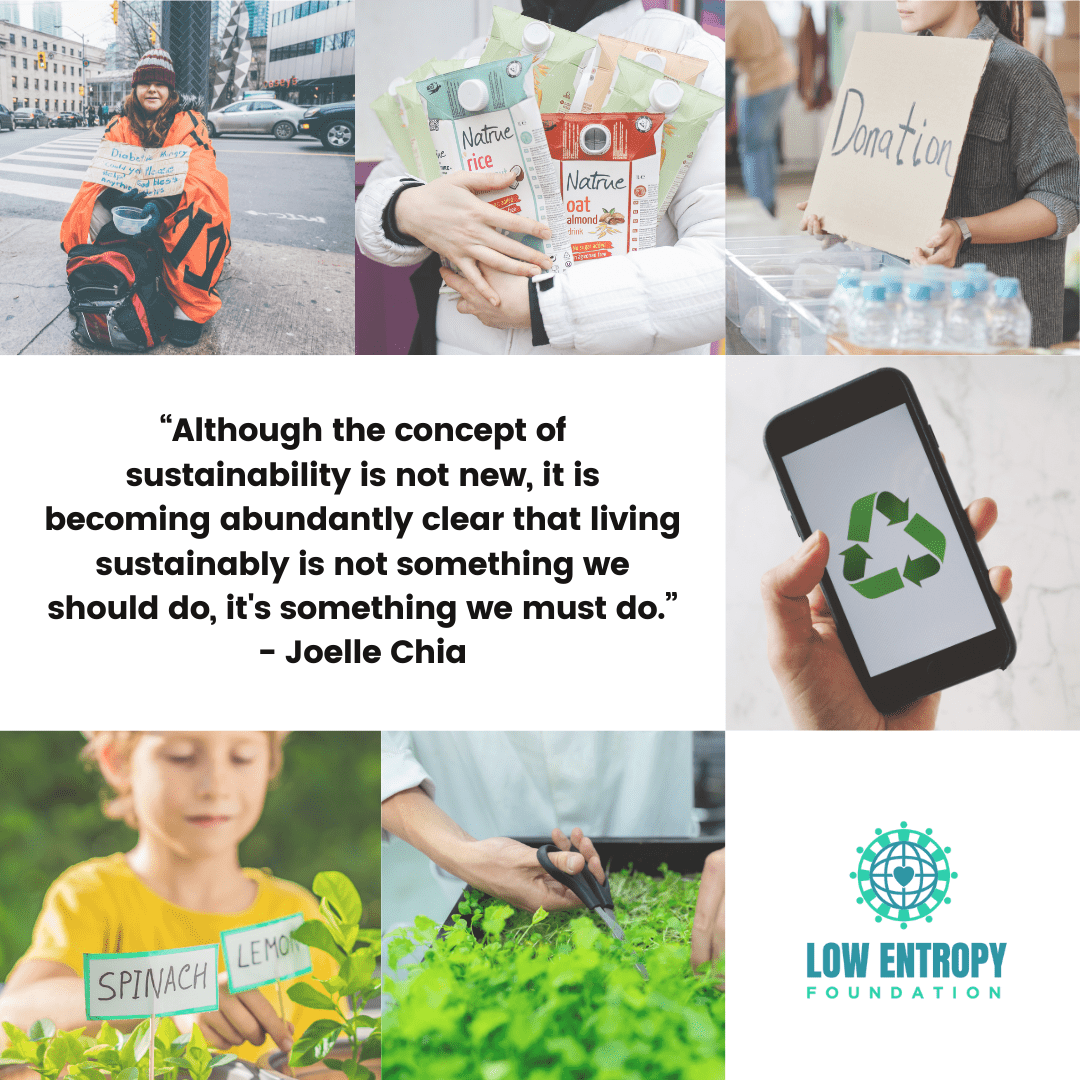Low Entropy Volunteer Writer Joelle Chia didn’t just learn how to crochet – Joelle learned how to knit together a plan to tackle social, economic and environmental sustainability issues on a local level.
When you hear the word “sustainability,” what first comes to mind? Sustainability is a word that has been increasingly used in the past 10 years. It has been used to describe the phenomenon of electric vehicles and new forms of energy, and to uplift environmental causes. In broad terms, sustainability is meeting our own needs without endangering future generations’ ability to meet their own. Although the concept of sustainability is not new, it is becoming abundantly clear that living sustainably is not something we should do, it’s something we must do. However, this concept doesn’t just apply to the environment. Social, environmental and economic sustainability all play a role in creating a sustainable world. Over the summer of 2020, I was able to witness the effects of these three pillars of sustainability and draw a personal conclusion.
The world produces more than 380 million tonnes of plastic every year, most of which end up as pollutants that enter the oceans and elsewhere in the natural environment. This large phenomenon translates to a smaller scale when looking at a local community. One day, I decided to take a walk through downtown Vancouver. As I stumbled upon different neighborhoods, it was entirely too common to see plastic waste lying around. Plastic bags, bottles and packaging flew down the streets as cars whizzed past, polluting the local atmosphere throughout. And as I walked back to the train, I passed an area of Vancouver that was notorious for its large homeless population. The buildings were decayed and stale lights casted an eerie glow on the faces of those slumped in corners. It was then that I asked myself, “Is there a way for me to relieve these issues firsthand, with the resources I already have?”
And so, together with a group of nine like-minded individuals the following summer, we decided to target leading environmental and local issues for a government-funded project. Two topics we decided to simultaneously address were homelessness and plastic waste. The goal of our project was to upcycle plastic bags into crocheted sleeping mats, which would then be donated to homeless shelters. By doing so, we would be able to transform typical single-use plastic into reusable sleeping mats. Over the course of two months, we hosted a plastic bag drive and brought in over 1000 single-use bags. Each of us learned to crochet plastic bags by tying bags together to, essentially, create “yarn.” In the end, over 30 mats were created and successfully delivered to a homeless shelter in the Lower Mainland.
When we visited the shelter to drop off sleeping mats, I was touched by the stories of those who regularly visited the shelter. Many individuals were just looking for a warm meal or a place to stay the night. Social and economic sustainability include basic necessities that can be accessed by all in order to keep themselves, their families, and their communities healthy and secure. Seeing the homeless shelter show enthusiasm and appreciation towards the sleeping mats made me evaluate my own life, and be grateful for the small things in life that were easily overlooked. Thinking back to that evening when I walked through downtown, economic and social sustainability standards were not met. However, now that my earlier question was answered and I was able to use my resources to instill sustainability in the local community, a glimmer of hope shone through.
In order for future generations to thrive and meet their needs, all pillars of sustainability must be met. Human well-being and the well-being of society are integral to what sustainability stands for, and they are both important aspects that should not be cast aside. So how can such a huge concept be applicable to a single person or small crowd? To me, sustainability is a lifestyle. Whether it be buying green products, donating to local charities, reading up on world events or even just recycling, all these small changes to one’s lifestyle can change the world for the better. When I took on the project last summer, my goal was not to “fix” all the problems I saw. Rather, I wanted to create positive change by encouraging a sustainable mindset for myself and those around me. By using resources that are already available, we can generate new perspectives, and eventually the issues of our world could subside as we learn to live in harmony.
What kind of changes have you made to move toward sustainability? What might you do in the future? Let us know in the comments, on one of our social media platforms, or at a Conscious Connections meeting!







